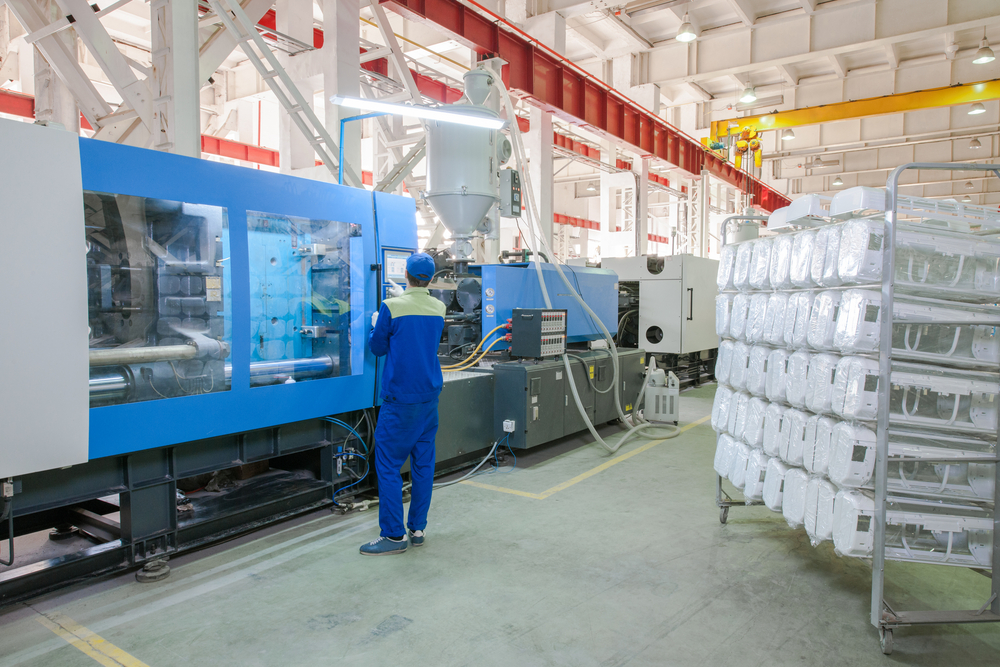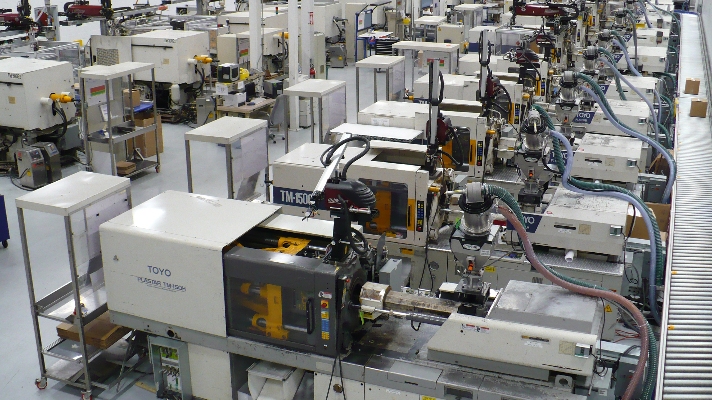Plastic Injection Molding: A Comprehensive Overview to Modern Manufacturing Techniques
Plastic Injection Molding: A Comprehensive Overview to Modern Manufacturing Techniques
Blog Article
Understanding the Basics of Plastic Injection Molding Procedures
Plastic shot molding offers as a keystone of contemporary production, offering a methodical method to creating complex parts with precision. This process not only encompasses the essential actions of melting and injecting materials right into molds but also entails a nuanced understanding of numerous influencing elements, such as temperature level and pressure. As industries increasingly require efficiency and high quality, the details of this methodology end up being more vital. Discovering these important elements might reveal how even minor modifications can lead to substantial enhancements in manufacturing end results, questioning about the potential for advancement in this established procedure.
What Is Plastic Shot Molding?
Plastic shot molding is a widely made use of manufacturing procedure that changes thermosetting and thermoplastic materials into exact and complex forms. This technique is preferred for its capacity to create high quantities of similar get rid of remarkable precision, making it a crucial approach in numerous industries, including automobile, customer products, and medical devices.
The process involves thawing the picked plastic material and injecting it right into a mold and mildew under high pressure. The mold, developed to the specifications of the desired component, enables the liquified plastic to take shape as it strengthens and cools down. When the product has hardened, the mold and mildew is opened up, and the finished part is ejected.
Plastic shot molding uses a number of advantages, including lowered waste, uniformity in production, and the ability to integrate intricate designs that might be challenging with various other manufacturing approaches. In addition, it sustains a broad series of products, each supplying special residential or commercial properties that can be tailored for certain applications. As markets proceed to introduce, plastic injection molding remains at the forefront, allowing the advancement of advanced products that meet advancing consumer needs.
The Shot Molding Process
The injection molding process is a sophisticated strategy that includes several crucial stages to produce top quality plastic parts. Plastic pellets are fed right into a warmed barrel where they are thawed right into a thick fluid. This molten plastic is then injected under high pressure into a precision-engineered mold, which shapes the material into the wanted kind.
As soon as the mold is filled, the plastic is allowed to solidify and cool, taking the form of the mold tooth cavity. Cooling time is vital, as it affects the cycle time and the last buildings of the molded part. After adequate air conditioning, the mold and mildew opens up, and the ended up component is expelled using ejector pins.

Materials Utilized in Injection Molding
Different products can be utilized in the injection molding process, each offering distinct buildings that deal with certain applications. The most generally made use of materials consist of thermoplastics, thermosetting plastics, and elastomers.

Thermosetting plastics, like epoxy and phenolic materials, undertake a chemical modification throughout the treating process, resulting in an inflexible, stringent structure. These materials are ideal for applications needing high heat resistance and architectural stability, usually made use of in auto components and electric insulators.
Elastomers, including silicone and rubber-based materials, supply flexibility and you can find out more durability. Their unique residential properties make them suitable for applications that require elasticity, such as seals and gaskets.
Furthermore, specialized products like bio-based plastics and composites are obtaining traction for their ecological benefits and boosted performance features, broadening the range of shot molding applications in various markets. Recognizing the buildings of these products is crucial for selecting the ideal type for certain projects.
Benefits of Shot Molding
Injection molding stands out as a highly reliable manufacturing procedure that offers numerous benefits for producing complex get rid of accuracy. One of one of the most considerable benefits is the ability to create complex layouts that would certainly be difficult or impossible to accomplish with other methods (Plastic Injection Molding). The procedure enables thorough attributes and limited tolerances, ensuring top quality elements
Furthermore, injection molding is understood for its quick manufacturing capabilities, making it an ideal selection for high-volume manufacturing. Once the mold and mildew is produced, parts can be generated quickly, lowering lead times and raising general efficiency. This efficiency not just lowers manufacturing expenses but additionally provides an one-upmanship in the marketplace.
The adaptability of materials used in shot molding further boosts its allure. A large range of thermoplastics and thermosetting polymers can be used, allowing makers to choose materials that finest fulfill their particular demands, including strength, warm, and versatility resistance.
Furthermore, the process minimizes waste, as excess material can often be reused and reused. This sustainability aspect adds to a minimized ecological impact, making shot molding a responsible production option. In general, the advantages of injection molding make it a preferred approach for numerous markets.
Factors Influencing Item Quality
While numerous variables can affect product quality in shot molding, understanding these components is important for achieving optimum outcomes. Trick elements consist of product choice, refining parameters, and mold layout.
Product option plays an essential role, as various polymers exhibit special residential properties that affect flowability, toughness, and thermal security. Inadequate product selection can lead to issues such as warping or insufficient filling.
Handling parameters, including cycle, temperature level, and pressure time, have to be thoroughly managed. Variants in these settings can cause variances in component measurements and surface finish. For example, excessively heats may trigger degradation of the polymer, while inadequate pressure can lead to short shots.
Mold design is equally important, as it determines the flow of the molten plastic and the cooling process. Improperly created molds might lead to unequal air conditioning prices, leading to recurring anxieties and dimensional inaccuracies.

Conclusion
In final thought, plastic shot molding acts as an essential production procedure that enables the reliable manufacturing of top notch elements. Proficiency of the injection molding procedure, consisting of the understanding of materials and the influence of various factors on product top quality, is crucial for achieving optimum outcomes. The advantages of this method, such as cost-effectiveness and style versatility, further emphasize its significance across numerous sectors, strengthening its status as a preferred selection for high-volume production.
Plastic injection molding offers as a keystone of contemporary manufacturing, providing a methodical approach to creating complex parts with accuracy.Plastic injection molding supplies a number of benefits, consisting of decreased waste, uniformity Check Out Your URL in manufacturing, and Resources the capacity to integrate intricate layouts that may be testing with various other manufacturing techniques (Plastic Injection Molding). As sectors continue to innovate, plastic injection molding stays at the forefront, allowing the growth of sophisticated items that meet advancing consumer needs
The injection molding procedure is a sophisticated method that includes several crucial stages to create high-quality plastic components.In verdict, plastic injection molding serves as a critical manufacturing process that allows the reliable production of high-grade components.
Report this page